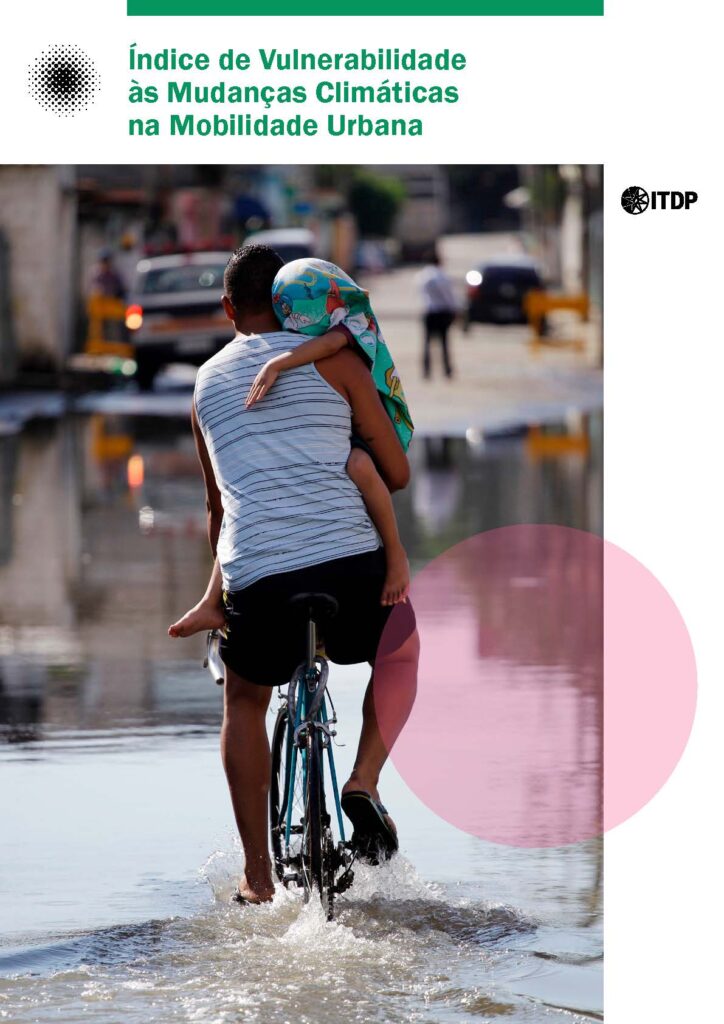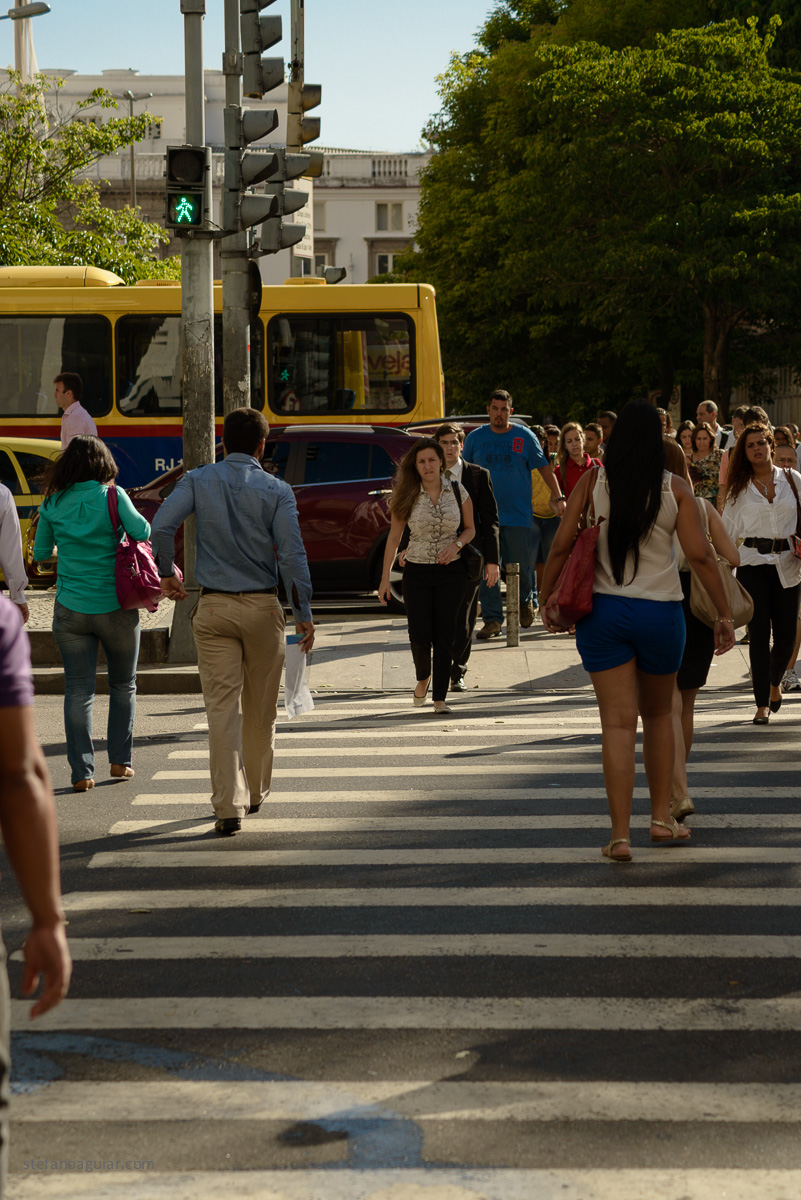Climate change is transforming the way people move around cities. Heat waves, heavy rains, and floods directly affect public transport and daily mobility, with the most significant impacts on vulnerable populations. In this context, ITDP Brazil has updated the Climate Change Vulnerability Index for Urban Mobility (IVMU), originally published in 2018. The new study provides an updated overview of how well Brazilian cities are prepared for — or exposed to — climate risks that may affect their mobility systems.
This 2025 edition of the IVMU comes at a time of growing political and institutional attention on climate issues, both regionally and globally. With the COP30 conference taking place in Belém in 2025, Brazil is in a strategic position to advance concrete commitments and investments into climate adaptation. The index offers a comparable and simple framework to guide public policies, support funding decisions, and prioritize adaptation actions for urban mobility across the national, state, and local levels.
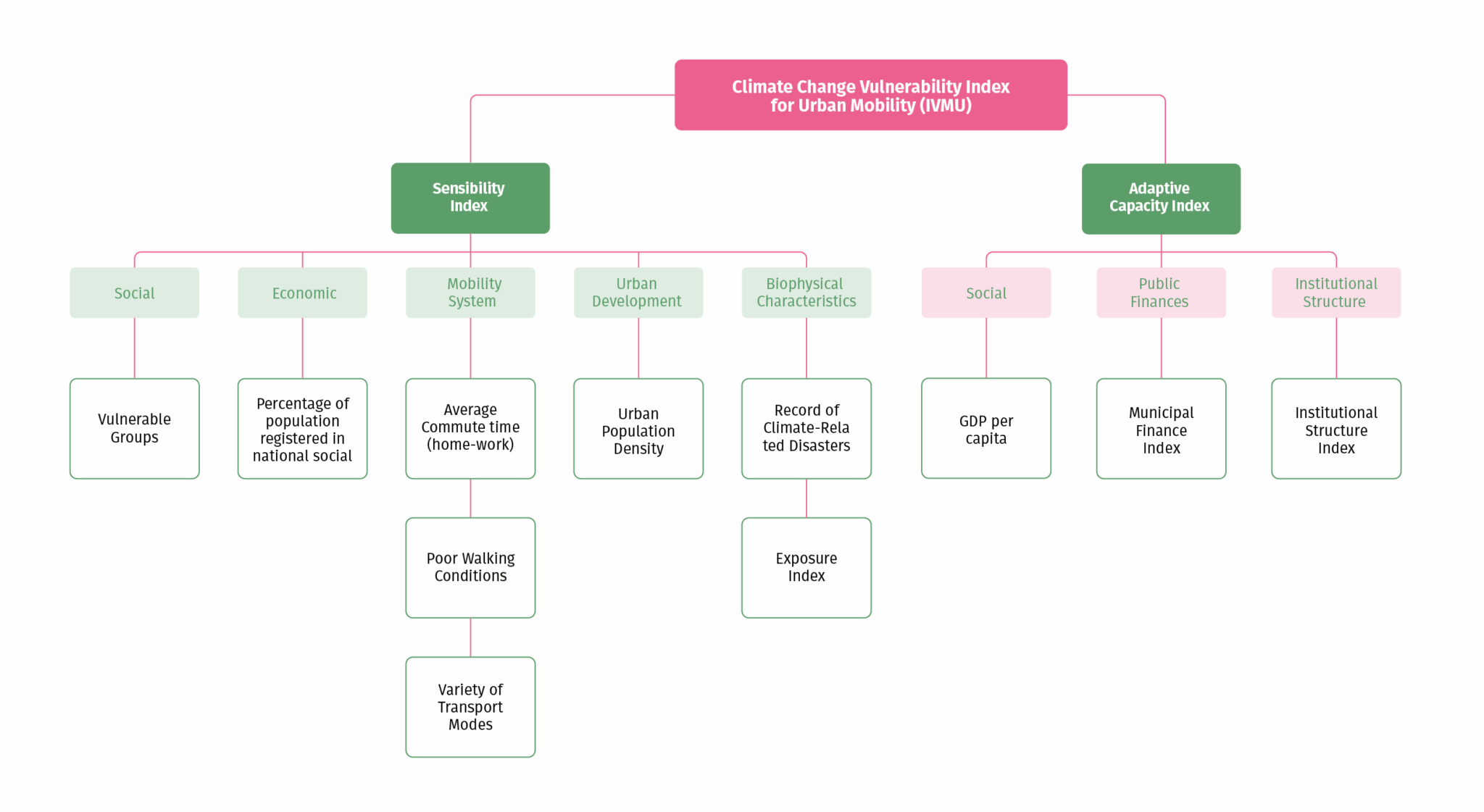
IVMC
Sensitivity
The sensitivity dimension expresses how urban mobility in a municipality is affected by climate events, considering its social, economic, urban, and environmental conditions. Cities with a high proportion of vulnerable groups — such as children, the elderly, people with disabilities, and Black and Indigenous women — tend to experience greater impacts. Economic vulnerability reflects the limited ability of low-income families to handle extra costs or disruptions in their daily commutes. Long travel times, poor walking conditions, and limited transport options also increase vulnerability. Moreover, dispersed urbanization patterns and settlements in flood-prone or landslide areas heighten the risk of mobility failures during extreme climate events.
Adaptive Capacity
Adaptive capacity represents the means cities and institutions have available to respond to climate hazards and reduce their impacts on mobility. Municipalities with higher per capita GDP and stronger public finances tend to show faster and more sustainable responses. The presence of transport authorities, mobility plans, and risk reduction strategies also strengthens institutional capacity. In short, the more robust the economic and governance structures, the lower the vulnerability of urban mobility to climate change.
Key Results
The 2025 edition of the IVMU was applied in 320 Brazilian municipalities with over 100,000 inhabitants, covering more than 115 million people. The results reveal strong regional inequalities.
The North and Northeast regions have the largest share of highly vulnerable cities, driven by low urban density, precarious travel conditions, and high social sensitivity. The South and Southeast regions present more diverse profiles, with many municipalities in intermediate or lower vulnerability levels.
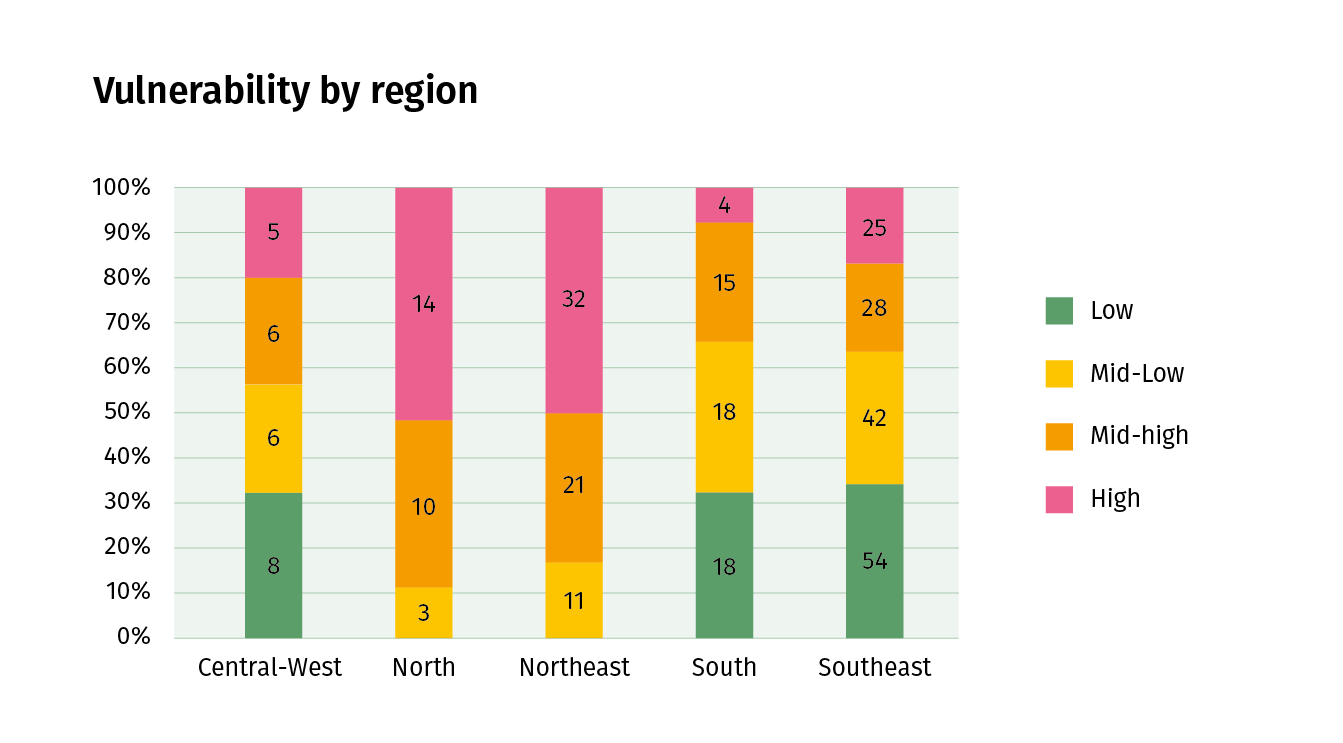
The most critical states include Rio de Janeiro, Pernambuco, Pará, Minas Gerais, Maranhão, Ceará, Amazonas, Sergipe, Amapá, and Bahia. In contrast, São Paulo, Paraná, Mato Grosso do Sul, and Goiás have a higher number of cities in lower vulnerability categories.
Medium-sized cities (100k–300k inhabitants) are the most vulnerable, combining low density, poor walking conditions, and limited institutional capacity. Larger cities, despite stronger adaptive capacity, face long travel times and high exposure to extreme events.
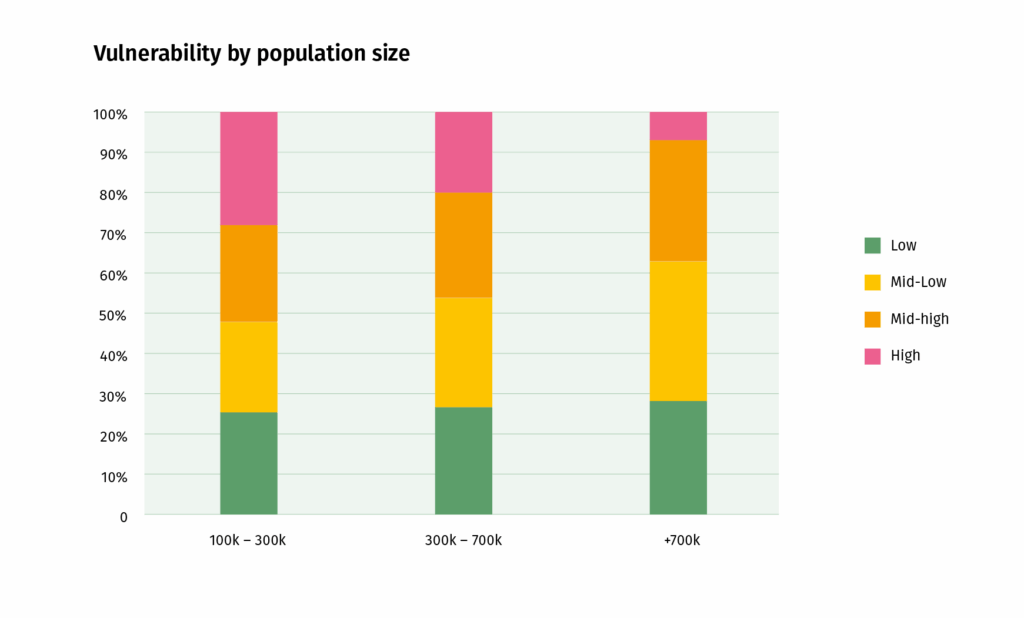
In metropolitan regions, central areas tend to be more resilient, while peripheral areas face higher sensitivity and climate risk levels.
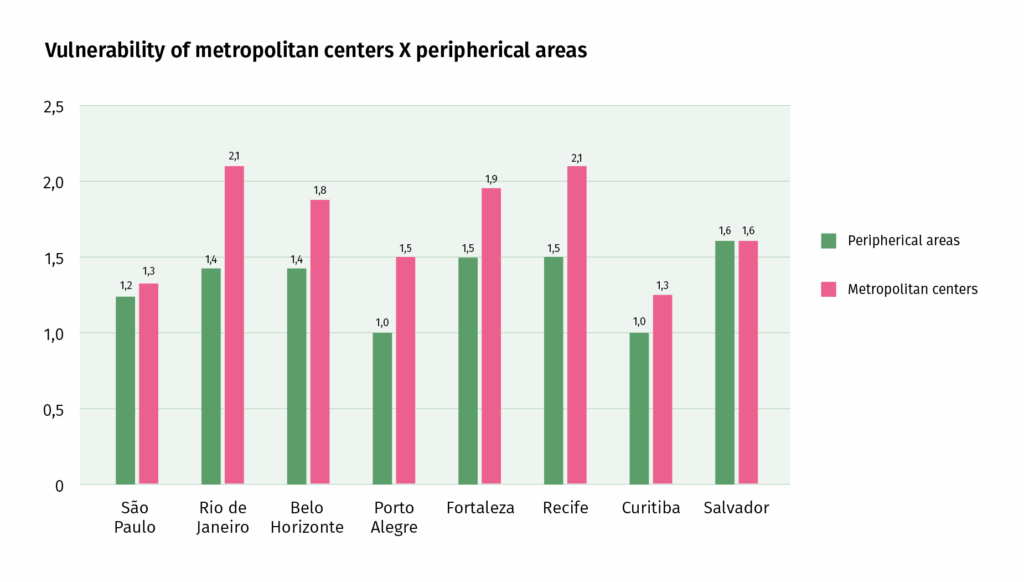
Recommendations
The 2025 edition of the IVMU highlights the need to strengthen climate adaptation in transport systems and urban policies. The recommendations are organized by government level:
National Government
- Establish minimum standards for mobility and risk reduction plans, with prioritization criteria based on climate vulnerability.
- Ensure continuous access to public and private financing — such as the Climate Fund and green credit instruments — for mobility projects focused on adaptation
States and Metropolitan Regions
- Integrate climate risk into metropolitan and transport plans
- Define responsibilities among government levels and establish operation protocols for extreme events.
- Prioritize watershed-based planning and green-blue infrastructure networks.
- Provide technical assistance to medium-sized cities and standardize performance metrics sensitive to climate conditions
- Include adaptation and contingency plans in public transport contracts.
Municipal Governments
- Medium cities (100k–300k inhabitants): strengthen transport authorities, update mobility plans with an adaptation strategy, and invest in local drainage and shading solutions.
- Intermediate cities (300k–700k inhabitants): rehabilitate public transport corridors and integrate civil defense, traffic, and transport management.
- Large cities and capitals: invest in climate retrofitting of infrastructure and develop finance portfolios for green-blue infrastructure.
Cross-cutting actions
- Strengthen data governance and continuous monitoring of urban mobility, to reduce uncertainties and ensure that adaptation policies also promote climate justice.

